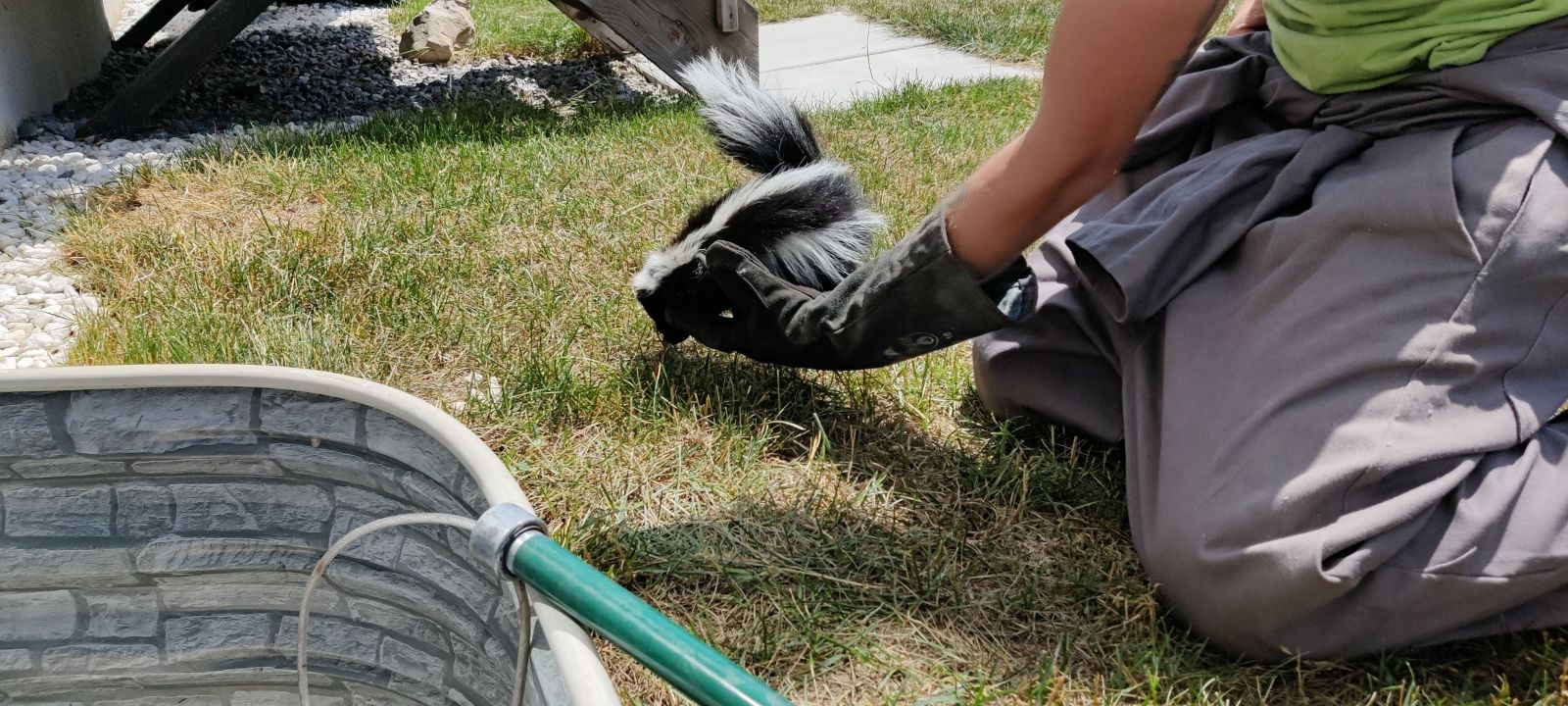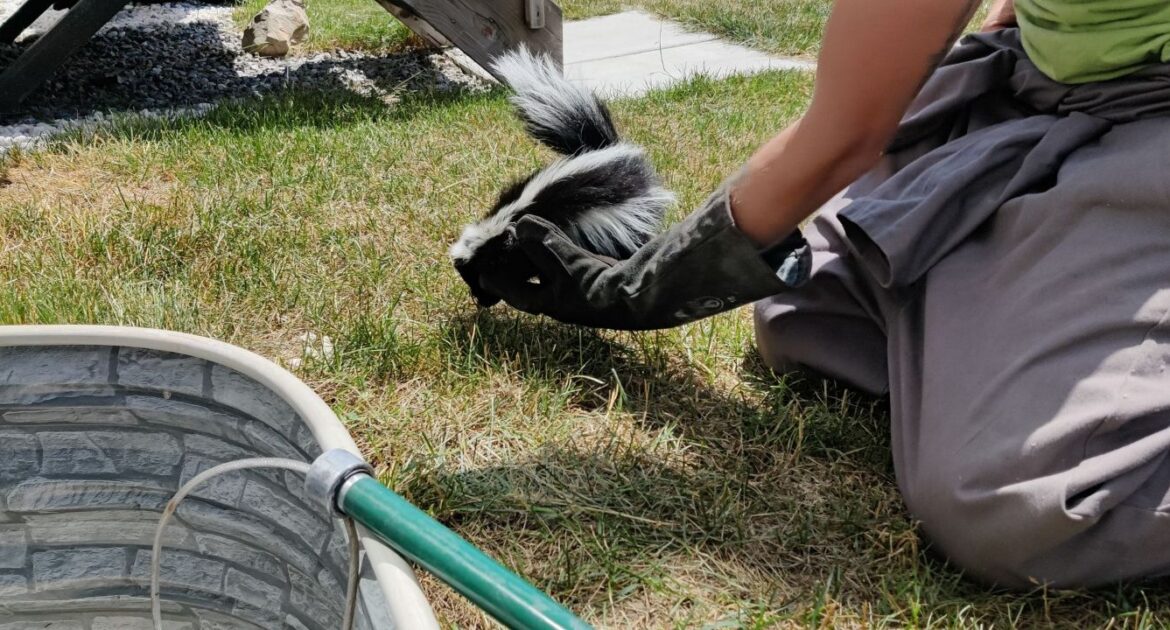Skunks are known for that unmistakable smell, but when they decide to make your yard or home their safe haven, things get more complicated. Knowing how to remove skunks properly is critical if you want to avoid damaged property, lingering odours, or even health risks. Yet, it’s common to see homeowners making skunk removal mistakes simply because they don’t know what to do.
From sealing entry points incorrectly to ignoring early signs of skunk activity, mishandling these situations can create bigger problems than you started with. If you’re searching for skunk removal tips or wondering how to approach the issue safely, the key is to understand and avoid these common missteps.
Below, we’ll highlight some of the most frequent mistakes and explain how expert solutions, like those used by us at Skedaddle Humane Wildlife Control in Whitby, can help prevent or solve them.
Blocking Entry Points Without Allowing an Exit
A skunk living under your porch or shed might leave you eager to seal the entry hole as quickly as possible. But blocking off their way out is one of the biggest skunk removal mistakes you can make. Sealing the opening traps the animal, causing it to panic. This might lead to scratching, digging, or chewing as it tries to escape, which can damage your property even further. Worse, if the animal becomes trapped inside and can’t get out, it could die in the space, leading to an even worse situation.
How can you avoid this mistake?
- Use One-Way Doors: These allow skunks to leave the area but prevent them from re-entering.
- Wait for All the Skunks to Vacate: Check thoroughly to ensure no animals or babies are left inside before sealing the opening permanently.
Forgetting About Baby Skunks
Skunks often raise their young in hidden areas, such as under decks, sheds, or crawl spaces. Homeowners sometimes make the mistake of removing a mother skunk without realizing that babies are still inside. This results in orphaned animals that may die in the space or create additional problems, like persistent noises and stronger odours.
How do you prevent this?
- Check for Babies During Removal: Spring and summer are prime nesting seasons.
- Look for Nesting Clues: Signs of a nest may include visible bedding materials or multiple skunks entering and exiting the area.
Professionals are trained to identify the presence of baby skunks and ensure that the entire family is removed safely and humanely.
Approaching Skunks Too Closely
Getting too close to a skunk without proper precautions can lead to unpleasant consequences. While most people are aware that skunks spray when they feel threatened, it’s easy to underestimate how powerful and long-lasting this defence mechanism can be. The odour isn’t just unpleasant; it’s also extremely difficult to remove from skin, clothing, and other surfaces.
To stay safe, it’s important to maintain a respectful distance from skunks. Trying to scare, grab, or corner them can trigger their spray response, leading to a mess no one wants to deal with. Instead, it’s best to rely on professionals who have the experience to handle skunks safely and calmly.
At Skedaddle, we use techniques designed to reduce stress for the animals while protecting you and your property from the dreaded smell. This approach prevents unnecessary risks and ensures a more effective skunk removal process.
Ignoring Early Warning Signs of Activity
Skunks don’t appear out of nowhere. There are often small signs of their presence that homeowners miss, allowing the problem to grow worse. By the time skunk damage becomes noticeable, the animals may have made themselves at home, resulting in a more challenging removal process.
What are the signs of activity?
- Small Holes in the Yard: Skunks dig for grubs and insects, leaving cone-shaped holes in the lawn.
- Faint Odours in Specific Spots: These are often stronger near porches or sheds.
- Overturned Garbage Bins or Food Containers: Skunks are attracted to unsecured food sources.
If you notice these signs, take action quickly. Early intervention can prevent a minor issue from escalating into a full infestation.
Rushing the Removal Process
Skunk removal is not a task that should be rushed. One of the most common mistakes people make is sealing entry points too quickly or trying to scare these animals away with loud noises or bright lights in the hope that they’ll leave immediately. While these actions might seem like quick fixes, they often have the opposite effect. They can cause stress for the animal, leading to behaviours like clawing, digging, or spraying, which can result in property damage or a lingering odour.
Patience is key when dealing with skunks. It’s important to give the animals enough time to exit safely, especially when using one-way doors. These devices are designed to allow skunks out but prevent them from getting back in, making them an effective and humane option.
Additionally, sudden or aggressive measures, like startling the animal, can cause panic, which makes the removal process even more challenging. However, professional guidance ensures that removal is handled carefully, protecting your property while treating the animal humanely. Skunk removal requires proper planning to ensure it’s done right, and trained experts can help make the process both safe and effective.
Overlooking Long-Term Prevention
Even after successfully removing skunks, the job isn’t done. One of the most common skunk removal mistakes is failing to address the underlying factors that attracted the skunks in the first place. If these remain, skunks or other wildlife may return, leading to a repeat of the same problems.
Here are s few effective prevention tips:
- Secure Your Garbage: Skunks are scavengers, and garbage bins can be a buffet for them if they aren’t properly secured. Use bins with tight-fitting lids that skunks cannot push off or knock over. Place the bins on a stable surface to prevent tipping, and clean up any loose scraps or spills around the area. Keeping your garbage secure is a simple way to avoid attracting unwanted wildlife.
- Eliminate Food Sources: Skunks are drawn to easy meals. Foods like birdseed, pet food, and open compost bins can lure them onto your property. To stop this, store pet food indoors and clean up any spilled birdseed immediately. Use a covered bin for compost, making sure it’s sealed tightly. Removing these temptations reduces the chance these animals will stick around.
- Close Gaps and Openings: Gaps under decks, porches, and sheds provide the perfect hiding and nesting spots for skunks. Carefully inspect your property for any holes or spaces where skunks might dig or squeeze through. Seal these areas with strong materials like metal mesh or wood. This keeps them from setting up home in spots you might not even notice at first.
- Tidy Your Yard: A messy yard with brush piles, woodpiles, or lots of clutter offers plenty of places for skunks to hide. To make your property less appealing, clean up any debris and keep your yard well-maintained. Organize woodpiles off the ground and trim overgrown bushes or tall grass. A tidy yard is less likely to attract wildlife looking for shelter.
- Improve Lighting: Skunks prefer moving around in the dark to avoid predators. Installing motion-activated lights can scare them off before they wander too close to your home. These lights suddenly turning on can make skunks feel unsafe, leading them to leave your property and look for shelter elsewhere.
At Skedaddle, we don’t just help with skunk removal. Our team also works to identify what attracted the skunks to your property in the first place. We offer advice and solutions to prevent them from coming back, helping you maintain a clean and wildlife-free yard.
Missing Hidden Access Points
Skunks are sneaky and resourceful when it comes to finding shelter. While an obvious entryway might catch your eye, secondary or hidden access points are often missed. This can lead to repeat invasions or make it impossible to remove all the skunks.
How can you cover all entry points? First, look for gaps, loose boards, or burrows under decks, porches, and outbuildings. Then, use durable materials that wildlife cannot easily chew through or move aside.
Our team thoroughly inspects properties to locate all potential skunk access points, ensuring the animals cannot return once they’ve been removed.
Trust Skedaddle for Skunk Removal
Removing skunks from your property takes knowledge, experience, and the right tools. Avoiding common skunk removal mistakes can save you time, frustration, and money while helping you maintain a safe and healthy living environment.
At Skedaddle Humane Wildlife Control in Whitby, we specialize in humane skunk removal. From using one-way doors to prevent re-entry to sealing access points and providing prevention advice, we offer effective, long-term solutions. Request an estimate today and take the first step toward a skunk-free property.




